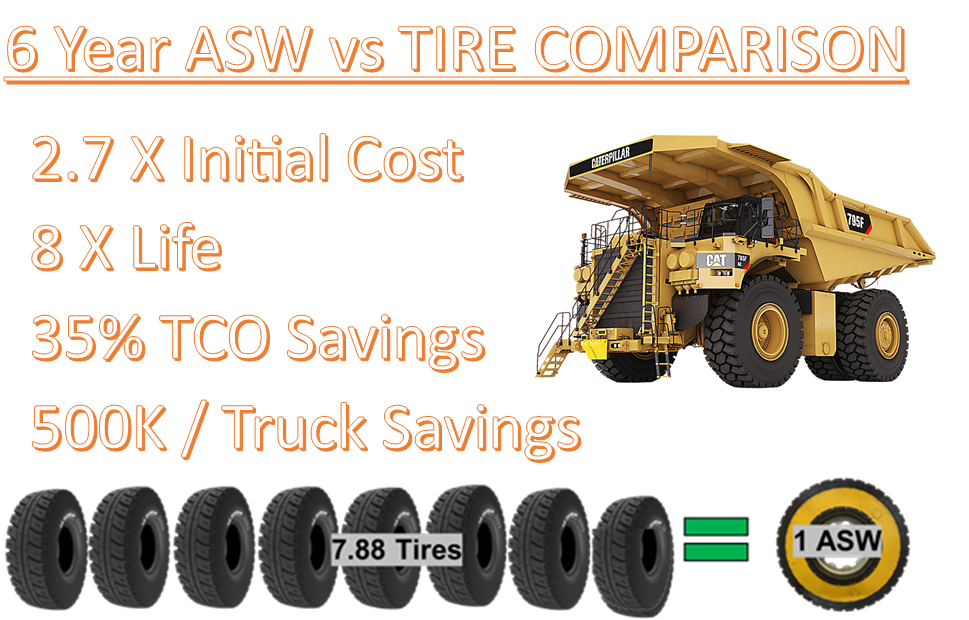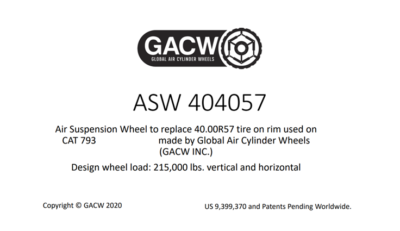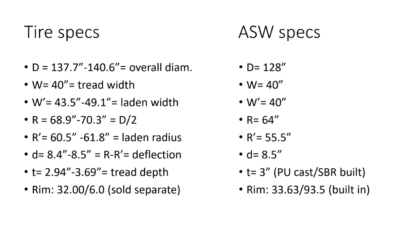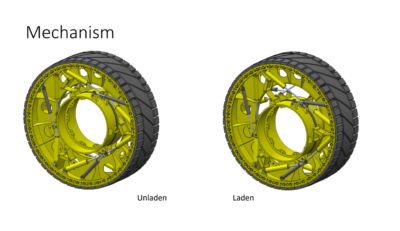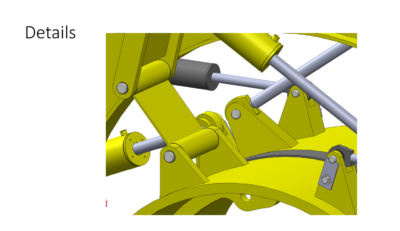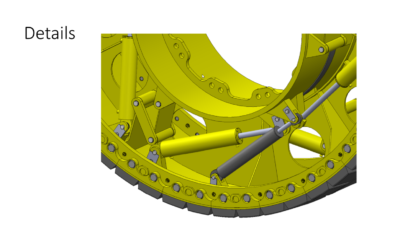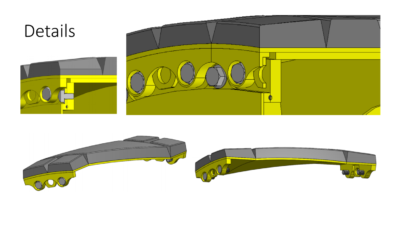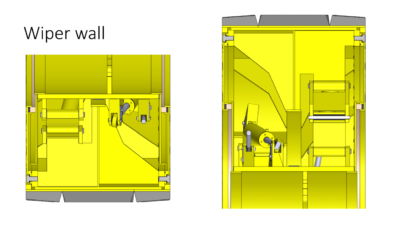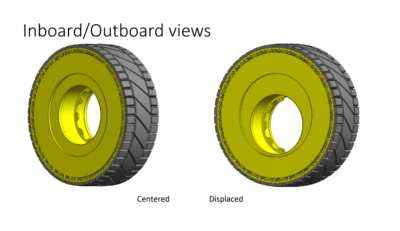ASW – 44.00 R57
ASW Overview
The ASW is the answer to all of the major challenges we face with respect to large mining tires.
-
Application
Komatsu 830 & Caterpillar 793
-
Release
Available Q3 2020
-
Trials
Opportunities in Canada & US
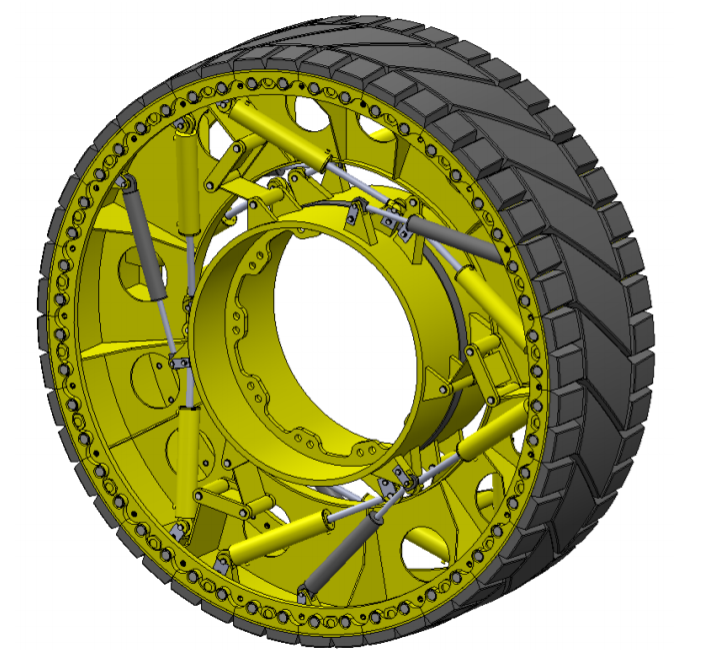
Problem
One of the highest costs in the maintenance budget is tires. Unreliable service life, environmental and logisitical challenges are just some of the issues faced by fleet managers. Tires are a critical wear item with high consequence failure. They pose a significant risk to all personnel within the vicinity of a tired mining vehicle. Loaded trucks with blown out tires are a very serious matter. Tire explosions and fires are a reality and risk which we must manage in mining. Managing and monitoring pressure and heat helps reduce exposure to risk however tire incidents are unpredictable in nature. It is a question of when/how often not if in most every large mining operation.
Damage from road hazards, severe conditions & heavy loads are common and take a toll on tire life. Many factors contribute to premature tire wear and their inherent criticality require a large safety margin. Consumption of tires can vary dramatically from month to month. Keeping sufficient stock is critical as there are only a few global manufacturers of wheels for large mining trucks & loaders. They are typically over-dimension loads requiring costly logistics both to acquire and dispose of a high volume of tires.
We deal with the aforementioned issues with appropriate staffing, skills and resources. Often the maintenance and care is contracted as part of a large service & procurement deal. We do very well at managing tires over the years as mines climb the maintenance maturity grid and pyramid of excellence. The problem is the pinnacle of the grid has been reached in many cases, and any further efforts would not have significant effect or benefit.
The problem of waste and disposal of tires has been addressed in many interesting and unconventional ways but for the most mines it is a very big problem with undeniable environmental consequences. We may find some temporary uses for old tires but there is always some sort of cost associated once retired from service.
Performance of the tires is critical and has plenty to do with operations and production. Heat issues can limit speed and load capacity. The application of the tires can also have detrimental effects on their useable life and predictability. Failures are critical and typically require a costly intervention and interruption. We are certainly pushing the upper limits of tires constantly.
Last but certainly not least of our considerations are the financial ramifications of all these contributing factors. Long term planning and large volume purchasing are the norm to ensure supply and lower cost. Tires are a consumable expense subject to high volatility in service life and cost month over month.
ASW Advantages
The ASW has numerous advantages over tires as displayed in the chart below, most importantly the wheels are expected to last 8-10X the average life of our tires therefore increasing truck availability and reliability drastically while eliminating the health and safety risks associated with tires.
- The ASW cannot explode or catch fire. It can be handled safely and eliminates the ever present danger to personnel working in the vicinity of tires.
- The ASW is a mechanical wheel with basic components which we are familiar with working. Instrumentation and CBM initiatives will allow immediate intervention and modelling for improved RCM initiatives.
- The wheels are a traditional steel manufacturing process. They can be built, assembled and repaired locally if need be and have an expected life of 10 tires* therefore reducing shipping, handling and waste cost. *Average 10 tires over a conservative 6 year life expectancy.
- All skills required are part of current technician base, Monitoring and repairing cylinders, inspecting metal fatigue and cracks, and Ground Engagement/wear analysis. Reduced risk allows reconsideration of bringing management in-house.
- Recyclable, expected life of 6-10 years . 8-10 to 1 ratio of tires to wheels
- Production limitations from heat generation are eliminated, carrying more, farther and faster is possible
- Fixed cost purchase, with Lease option high returns over tires. IRR 37%
